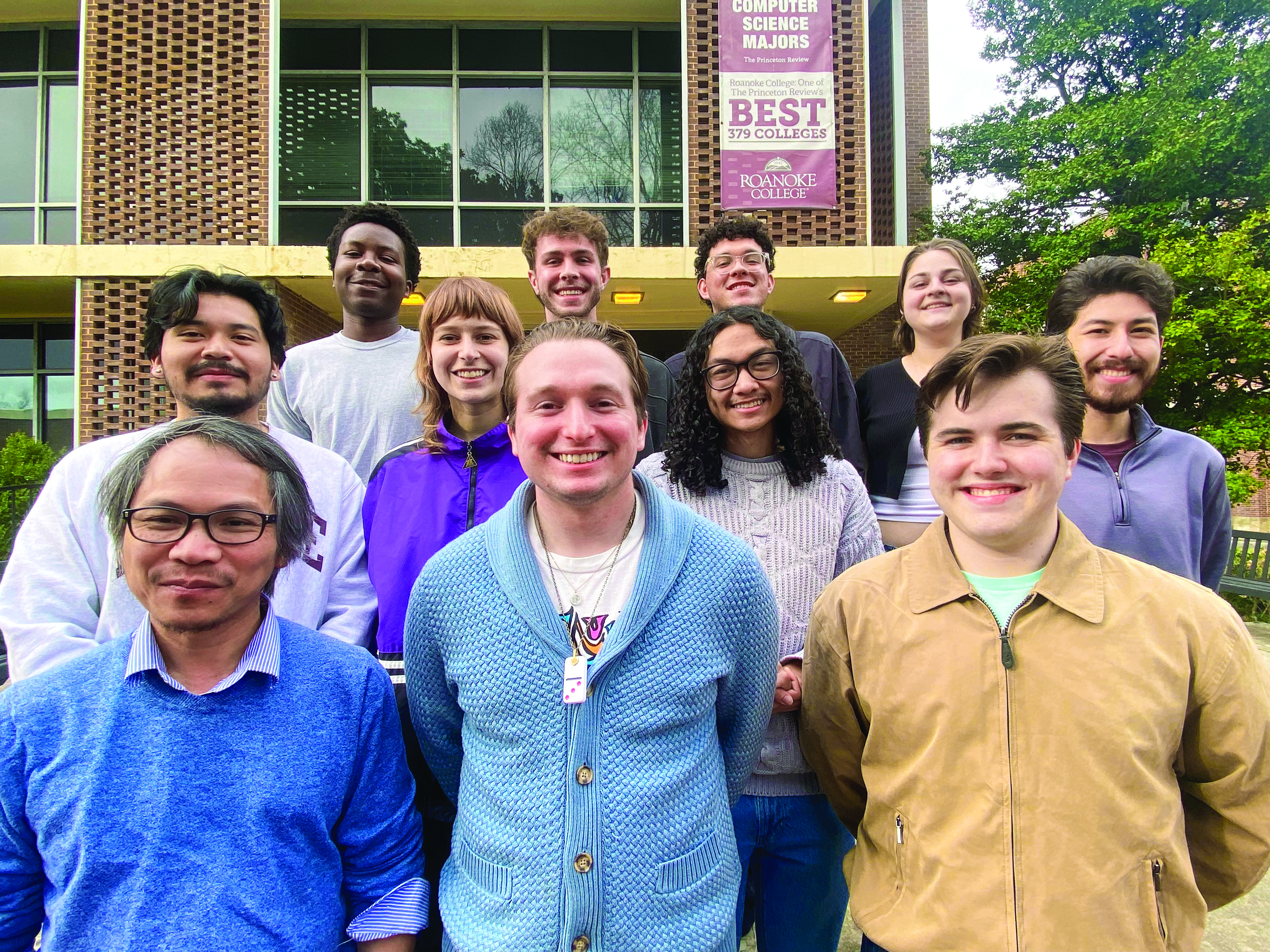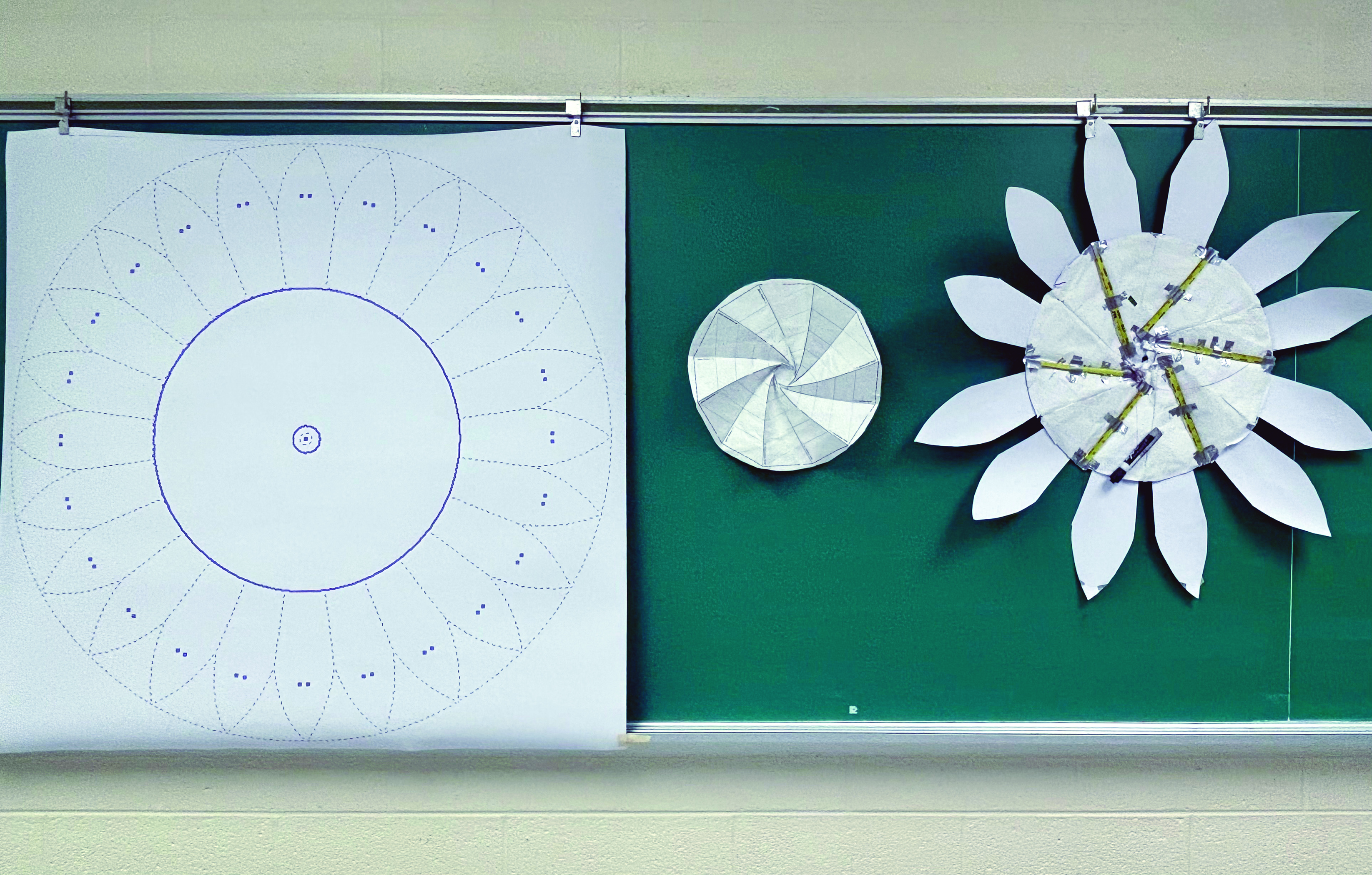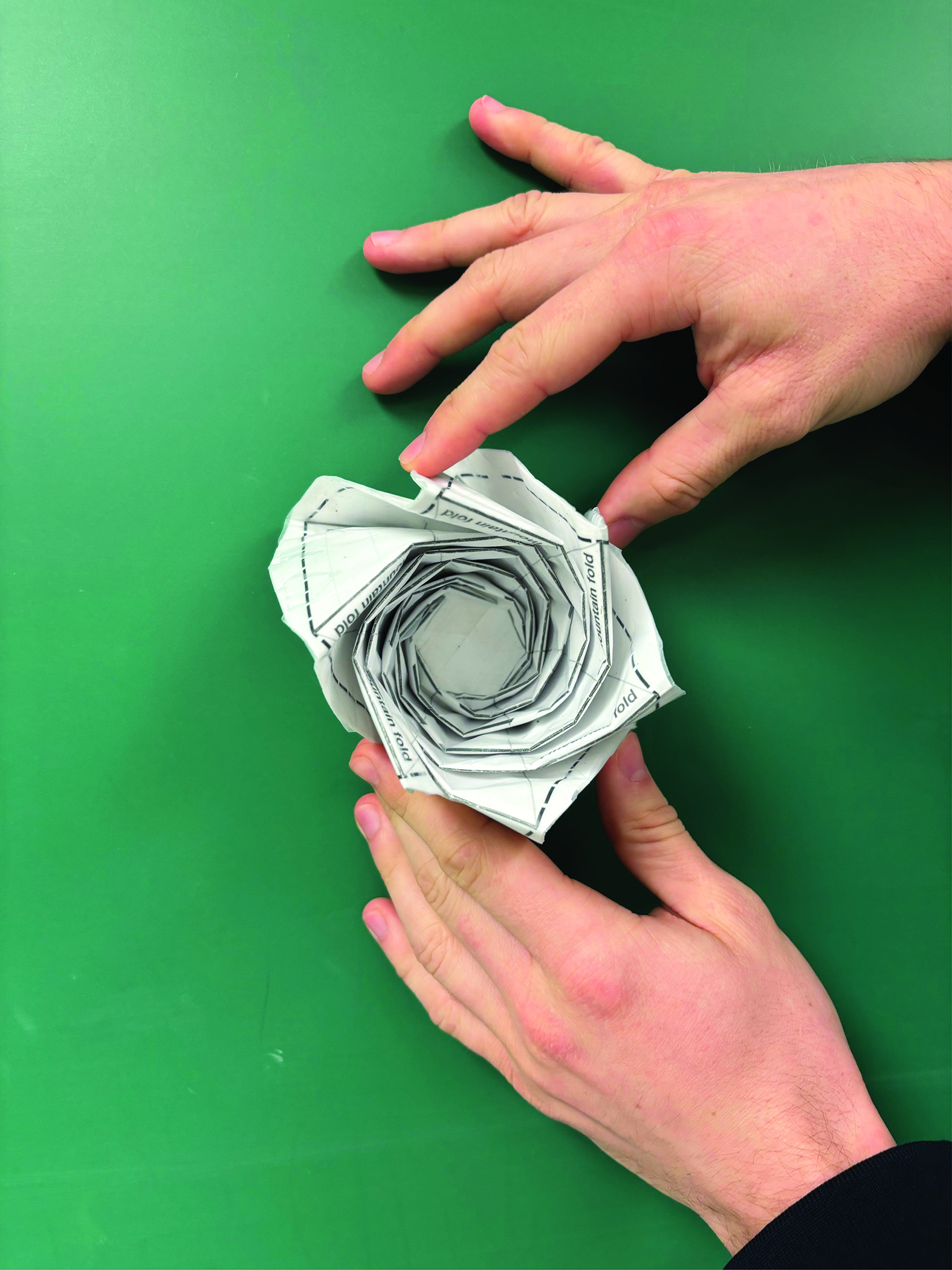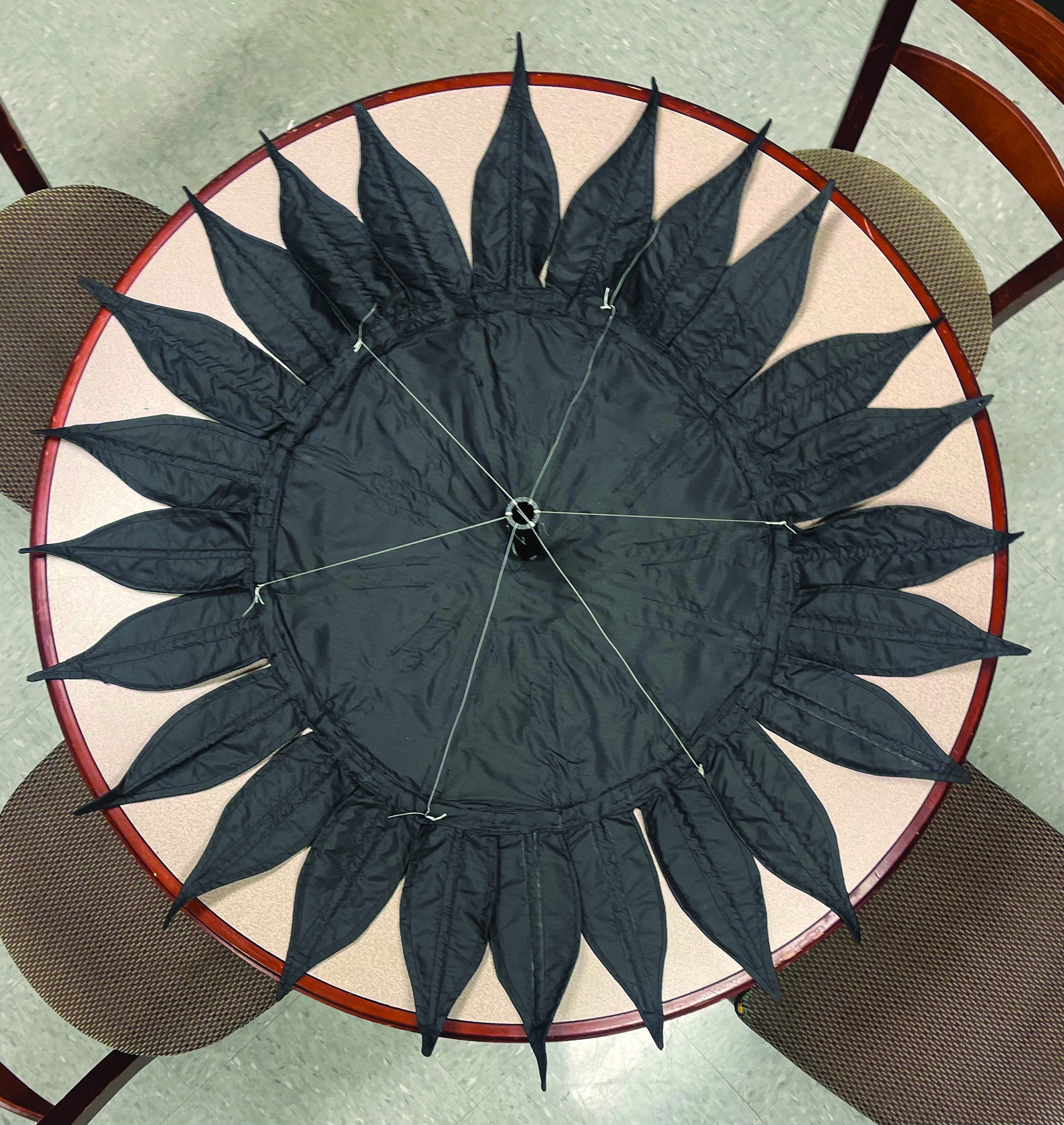Designing a Starshade for Space
Fall
2024
Building Blocks - Undergraduate Research and Outreach Projects
Designing a Starshade for Space
Bobby Hoye, SPS Chapter President, Roanoke College
The things we build here on Earth and send out into space share our collective story. They reveal our values, ambitions, and perspectives. In pursuit of this vision, I and a team of like-minded people at Roanoke College entered the NASA HOEE Starshade Challenge. We aspired to make a significant impact and, coupled with the grit to make our idea a reality, we came together to share our story. Here is that story.
In August of 2023, SPS and the NASA Hybrid Observatory for Earth-like Exoplanets (HOEE) Starshade Team approached me about participating in the NASA HOEE Starshade Challenge. This challenge, hosted jointly by the American Institute of Physics and NASA, solicited entries from undergraduate student teams across the country for starshades 100 meters in diameter.
Starshades are a type of spacecraft that could shade Earth-based telescopes from starlight. The idea is to use them in parallel with a new era of large Earth-based telescopes—a starshade would sit between Earth and a star, blocking light from the star so that we could see any Earth-like exoplanets in its orbit. Such exoplanets serve as good candidates for life outside of Earth; therefore, learning about them serves as a crucial next step in astrophysics and astrobiology.
Through the competition, NASA aimed to compile a set of models that could serve as starting places for further design, construction, and application in space.
With the ambition of being part of this new age of space exploration, I talked to my astrophysics professor, Truong Le, and he agreed to mentor a team. We assembled a diverse group of classmates, each bringing unique specialties and strengths to the table. What started as weekly meetings quickly became a pastime and a priority, and late nights became a regularity. As a small liberal arts school in southwest Virginia, we had a passion for proving ourselves.
Our physics program has gone through tremendous change over the past few years. Despite rotating professors, virtual learning, and few resources for special projects, we managed to build a community and a family united by a passion to spark change and leave our mark on something bigger than ourselves.
For the design, we played to our strengths—a liberal arts education with a fundamental approach to physics. Our philosophy was to keep the design as simple as possible through minimizing parts. This often took the shape of a frustratingly iterative process of comparing simple ideas to more complex ideas and then simplifying again.
Our starshade design has 24 petals extending outward in increments of 15 degrees. The petals are made of lightweight carbon fiber fabric and are shaped with rigid edges of high-carbon steel to create a solid gradient of sunlight toward the tips of the petals. The petals are held together by a central disk made of a carbon nanotube support frame and Kevlar fabric. Finally, six cables made of Dyneema, a high-performance fiber, help control tension in the memory materials during deployment. This design aims to minimize weight while remaining within the constraints given by NASA.
Our team earned second place in the competition, and we are continuing to work with NASA on our design.
Not only was this experience an opportunity to engage with a modern-day challenge, but it also gave us insight into the world of engineering and how a project becomes a reality. I am proud and grateful to have had the opportunity to colead this team. I dream that the work we started will impact future generations of students.
Starshade may help answer significant questions about our place in the galaxy. If we can see what else is out there, we may even be able to learn a little bit about what makes us special or, more interestingly, what doesn’t make us special.
Get Money for Chapter Research
SPS Chapter Research Awards provide up to $2,000 for physics and astronomy research projects deemed imaginative and likely to contribute to strengthening the SPS program. Applications are due November 15 each year. For details visit spsnational.org/awards/chapter-research.
More from this department
Building Blocks - Undergraduate Research and Outreach Projects




